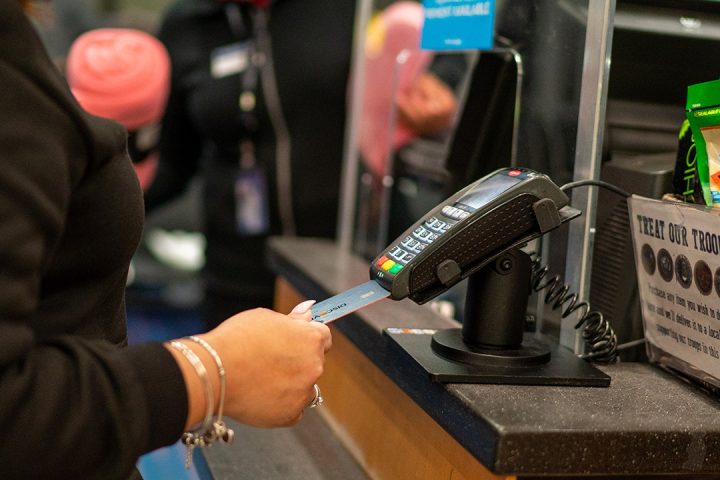The share of Americans who experienced severe hunger increased in 2022, according to a new government report.
About 5.1% of U.S. households had at least one family member who ate less or irregularly during 2022 because of a lack of money or resources, up from 3.8% in the previous year, and 3.9% in 2020, according to a new report released Wednesday by the U.S. Department of Agriculture. That means at least a million more families experienced significant hunger in 2022 compared to the previous year. The USDA tagged this group of people as having “very low food security,” the most severe form of food insecurity. Food security measures how much and frequently people are able to eat.
A few reports earlier this year pointed to rising food insecurity among low-income families, but the annual USDA survey is the most rigorous and authoritative one on the issue, policy advocates and researchers said.
To be sure, more than four in five Americans had access to healthy and adequate food in 2022, but food insecurity jumped as a whole for households last year, the report found. About 12.8 percent — 17 million households — in the U.S. were food insecure sometime during 2022, up from 10.5% in 2021 and 10.5% in 2020.
“This is the USDA telling the story of millions of people who live in households who are struggling with hunger,” said Geri Henchy, director of nutrition policy at the Food Research and Action Center, a nonprofit advocate for policies targeting hunger and nutrition.
Households from all demographics saw an increase in food insecurity from 2021 to 2022, but one of the biggest jumps was for families with children. The food insecurity rate for households with children was 17.3% in 2022, up from 12.5% in 2021 and a high since 2015.
Close to a third of households with single mothers or other single female parents were food insecure in 2022, and more than one-fifth of households led by single dads or other male parenting figures were food insecure. Black and Latino households had double the food insecurity rate than other households in 2022, at 27.9% and 24.7% respectively.
“These findings are unacceptable,” said Agriculture Secretary Tom Vilsack in a statement following the release of the report. “They paint a picture of just how many Americans faced the heartbreaking challenge last year of struggling to meet a basic need for themselves and their children.”
The situation could be worse in 2023
Although the study did not provide any direct reasons as to what exactly led to the rise in food insecurity, prior research by the USDA team pointed to the scaleback of government food assistance programs in 2022, Matthew Rabbitt, an economist with the Food Economics Division at the USDA said in a webinar Wednesday.
Many pandemic programs rolled out to help families through disruptions expired in 2022. Schools provided free school meals to all families during the first two school years of the pandemic, but that ended before the 2022-23 school year. An expanded version of child tax credits — which raised the maximum amount from $2,000 per child to $3,600 for those under age six and $3,000 for older kids — ended before January 2022. By late 2022, 17 states ended the emergency allotments from the Supplemental Nutrition Assistance Program, which had added at least $99 to household food budgets every month. SNAP is a federal nutrition program that helps low-income families.
“We are pretty certain what this means is that the trend is continuing,” said Henchy. Food insecurity could be higher in 2023 because factors that drove up the food insecurity in 2022 still exist, she said. More COVID benefits expired in 2023 — SNAP emergency allotments ended for all states by March this year, and food costs are still up.
Inflation, which started to push up prices on consumer goods and services in late 2021 and kicked into high gear in 2022, placed heavier financial burdens on families. Inflation peaked in June 2022, with an 8.9% annual increase in prices, according to the Bureau of Labor Statistics. Although it slowed in 2023 to 3.7% in September, some families continue to struggle to put food on the table while meeting basic expenses like rent. Demands for food assistance have also remained high six months after the end of the emergency SNAP allotments, according to Propel, an app that enables low-income Americans to access their SNAP benefits.
The USDA study on food security is a “sobering” and “stark” reminder of the consequences of the rolling back of many safety net programs, Secretary Vilsack said. “The survey responses should be a wake-up call to those wanting to further roll back our anti-poverty and anti-hunger programs,” he said in the statement.
Lawmakers are set to discuss food assistance in Washington in the coming months, including the level of SNAP and other nutrition benefits in the next five years in the Farm Bill. The last Farm Bill from 2018 expired on Sept. 30. Congress has not voted on a new version yet.
Read the full article here






